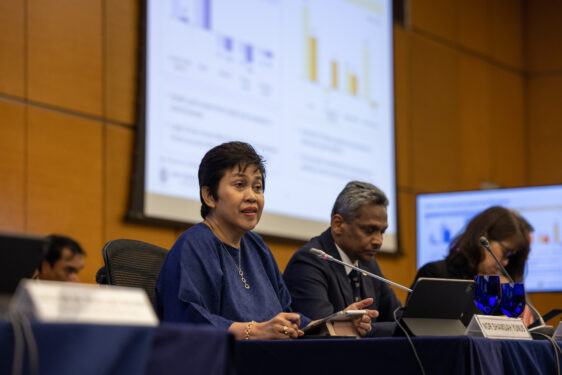MALAYSIA posted an economic growth of 5.6% in 1Q 2023 (4Q 2022: 7.1%; 1Q 2011- 4Q 2019 average: 5.1%) driven mainly by domestic demand.
This is slightly better than the projection of Hong Leong Investment Bank (HLIB) Research which expects the country’s gross domestic product (GDP) for the period to weaken to 5.2% quarter-on-quarter (qoq) from 7.1% posted on 4Q FY2022, weighed down by moderations across the board.
In its assessment, Bank Negara Malaysia (BNM) said further improvement in the labour market with strong growth in employment and continued expansion in wages had supported private consumption spending during the period under review.
“Meanwhile, investment activity was underpinned by capacity expansion and continued implementation of multi-year projects,” observed the central bank. “Inbound tourism continued to recover, lifting services exports and partially offsetting the slower goods export growth.”
Even as cost pressures, particularly global commodity prices continued to ease, core inflation remained elevated during the quarter amid continued strength in demand. Price pressures remained pervasive.
The share of consumer price index (CPI) items recording monthly price increases rose to 56.0% during the quarter (4Q 2022: 51.2%).
This in part reflected price adjustments by firms typically done at the beginning of the year (1Q average from 2011-2019: 52.2%; Overall average from 2011-2019: 45.6%) as well as continued price increases for some food-related items.

Exchange rate developments
According to BNM, domestic financial conditions during 1Q 2023 remained broadly stable despite uncertainties surrounding the global economic outlook.
“Financial market expectations for US monetary policy were affected by evolving concerns over the US economy. These include the pace of disinflation and sustainability of its economic momentum,” noted the central bank.
“By the end of 1Q 2023, risks from banking sector stress in the US and Europe weighed further on these expectations. As a result, the US dollar broadly depreciated amid shifting sentiments surrounding these developments, reversing its appreciation gains during first half of the quarter.”
Against such backdrop, the ringgit continued to exhibit two-way movements with an overall marginal appreciation of 0.1% against the greenback during the quarter.
Financing conditions
During 1Q 2023, credit to the private non-financial sector expanded by 4.2% (4Q 2022: 4.7%). This was accounted mainly by slower growth in outstanding loans (1Q 2023: 4.7%; 4Q 2022: 5.7%) and outstanding corporate bonds (1Q 2023: 4.4%, 4Q 2022: 4.6%).
Outstanding business loans grew by 2.4% following slower growth in working capital loans. Nonetheless, investment-related loans remained forthcoming, especially in the SME (small medium enterprise) segment. For households, outstanding loan growth expanded by 5.2%.
This was supported by sustained growth in outstanding loans for the purchase of big-ticket items with higher growth recorded particularly for car purchases.
Moving forward, BNM expects Malaysia’s growth to remain resilient in 2023, anchored by firm domestic demand.
“Despite global headwinds, the Malaysian economy is projected to expand by 4.0% to 5.0% in 2023, driven by firm domestic demand. Improving employment and income as well as continued implementation of multi-year projects that would support consumption and investment activity,” the central bank pointed out.
Moreover, higher inbound tourism activity would lift high-touch services industries.
“Risks to Malaysia’s growth outlook are relatively balanced. Upside risks stem mainly from domestic factors. These include stronger-than-expected tourism activity and implementation of projects including those from the re-tabled Budget 2023,” observed BNM governor Tan Sri Nor Shamsiah Mohd Yunus.

“Meanwhile, downside risks could emanate from lower exports due to weaker-than-expected global growth and more volatile global financial market conditions.”
Elsewhere, headline and core inflation are expected to moderate but would remain above historical average in 2023.
The moderation reflects lower global cost factors amid easing supply chain disruptions and lower commodity prices. However, core inflation will remain at elevated levels amid firm demand conditions, according to the central bank.
“Existing price controls and fuel subsidies will continue to partly contain the extent of upward inflationary pressures,” noted BNM.
“The balance of risk to the inflation outlook is tilted to the upside and remains highly subject to any changes in domestic policy, financial market developments and global commodity prices.” – May 12, 2023









